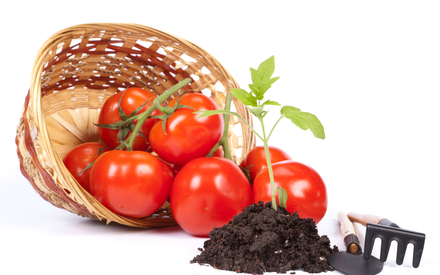 In order to grow a good vegetable, you need to select the right seeds, prepare the soil, grow seedlings, and then transfer all this good to the site and take care, in order to wait for the rich harvest. Therefore, we learn what planting a tomato for seedlings in 2017, from the very beginning of sowing seeds, is, and we will be fully equipped to enjoy beautiful, large and healthy fruits in the summer.
In order to grow a good vegetable, you need to select the right seeds, prepare the soil, grow seedlings, and then transfer all this good to the site and take care, in order to wait for the rich harvest. Therefore, we learn what planting a tomato for seedlings in 2017, from the very beginning of sowing seeds, is, and we will be fully equipped to enjoy beautiful, large and healthy fruits in the summer.
Seed selection
Of course, if you have not prepared your seeds, you need to purchase them first. Decide which varieties, what ripening dates you need, buy in advance, choose where you will grow them and how much you need. Tomatoes can be tall, bushy, for greenhouses, and growing without them, fleshy and juicy - it all depends on the preferences and capabilities of your garden.
Take a look: wonderful tomatoes from Russian gardens, reviews.
Seed preparation
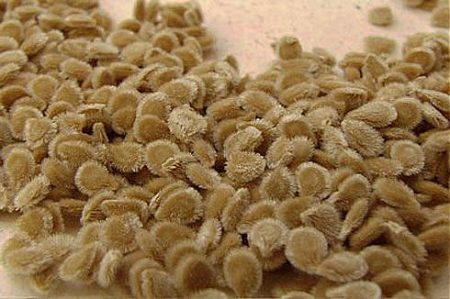
Having selected the seeds, they need to be prepared. To do this, it is recommended to sort the seeds, so as not to waste time and space for unnecessary, lifeless seeds, from which you still can’t wait for the crop. This is done simply.
• Pour salt into water from the following calculation: 1 liter of water / 2 tablespoons of salt. Immerse the purchased seeds in this mixture, let them sit there for 7-9 minutes. You will see that some have surfaced, others have settled on the bottom. Those that have risen to the surface of the water are thrown away, they are not suitable - dummies. But those who drowned are quite useful to us, they are full, lively and good for landing.
• Now they need to be disinfected. Make a weak manganese solution and hold the seeds in them, then rinse thoroughly.
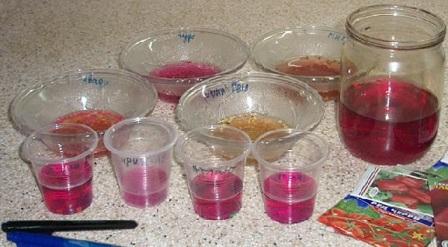
• After this, you need to feed the seeds - you can buy special solution in the store and soak the grains in it for a day.
• Then you can either sprout the seeds and then plant them, or just soak them in warm water on a wet napkin or cloth.
• Your seeds prepared in this way have already come to life, and are ready for germination.
Tip: Experienced gardeners say that it is best to use melt water for these purposes - either melt the snow, if everything is okay with the environment, or you can use it to prepare living water for yourself, which is useful to drink, not just seeds or water.
Take a plastic bottle, pour in it not up to the neck defended water (so as not to burst when frozen) and send it to the freezer. As the water freezes to half freeze - take it out, drain the one that has gathered around a block of ice - it is bad. Leave the bottle for 10 minutes, then drain off something that has melted a bit, and everything else is pure living water.
Preparation of land and tanks
Now you need to prepare the tanks and the soil - this is the third important stage after the purchase of seeds and preparation. You can sow the seeds in a large container, and then sprout dives in small cups. You can buy soil, or you can prepare it yourself from garden soil. But - first calcine it or spill it with a manganese solution for disinfection - does it really matter what sits there, which larvae of the pests lurk? Take the turf land, sand there, a little sawdust, humus, mix everything, and the soil is ready.
Fall asleep in a container for 2/3 - pour well, let the water soak in. It’s better to cover it with a film and leave it for a day, then flatten it. Grooves can be done - and it is already possible to plant our swollen or even slightly hatching seeds. Lightly sprinkle a couple of millimeters with zemstvo. Yes, do not forget to break through the drainage holes at the bottom, otherwise seedlings will rot. We cover everything with a film and let ourselves sit there until the sprouts appear.
It is interesting: growing tomatoes according to the method of I.M. Maslova.
When to plant?
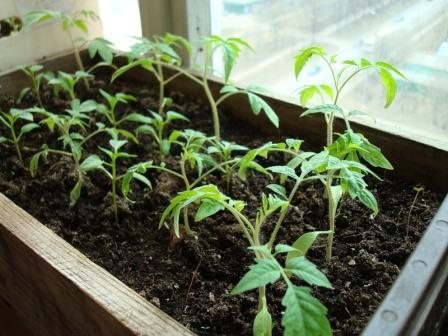
On the packaging of each variety is usually indicated - how long it takes the seeds to bear fruit, so you need to count to determine the timing of planting seeds. If it is indicated that before the buds appear - 60 days, we begin to count. About a week, or even 10 days, will take time before seedlings. Next is another week to restore the seedlings when you dive, plus another 60 days, and as a result we have almost 80 days. So, to get the fruits in July, you need to sow the seeds in mid-March, at the end of May and beginning of June, plant in the ground or greenhouse.
As for the time of planting seeds - you can plant in March, or later, in April, only the varieties need to be super early, super determinant, and you will get strong tomato bushes that can also surpass the rest of March. For planting in insulated greenhouses, you can sow seeds in February.
Seedling Care
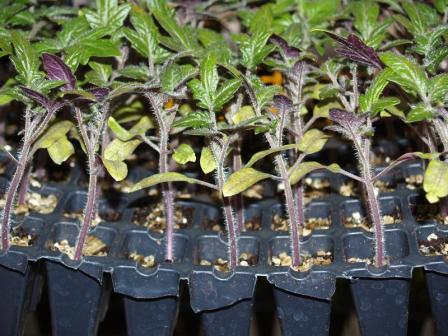
When seeds are planted in a common container, they often sprout densely, and they need to be dived into separate containers - whether it's plastic cups or peat pots - you decide. In addition to a large capacity, you can also buy peat tablets, plant 1-3 grains in them, and then dive directly with a peat tablet into separate containers.
So, the seeds were planted, spilled with warm, weak potassium permanganate, covered the heat and until the sprouts hatch, we do not open it. When they ascended, they removed the film and rearranged it to a bright place, with a temperature of up to 16 degrees. As the kids get a little stronger, in a week it is already possible to raise the temperature to 24, but at night to remove them in a room where it is up to 12 degrees, or open the window, but - so that the drafts do not get on the sprouts.
As for watering - experienced gardeners say - it is better not to water it before the appearance of these leaves, but if you already see that the strawberry has dried up, sprinkle it from the spray bottle. After the leaves appear, water the seedlings once a week, and as the real five leaves appear, start watering after 3-4 days.
Pick
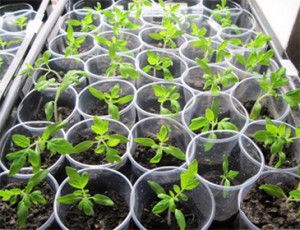
When these little leaves appear in your kids - it's time to dive into a separate house sprouts. But - look so that the kids get strong, solid, plump at the base, then the stem will be strong and solid.
When transferring to separate cups near seedlings, it is necessary to pinch the main spine so that it does not stretch down and grow well, such a plant will have a lush strong root.
Top dressing
After 10 days, your seedlings need to be fed. Buy ready-made fertilizer, or make it yourself from this calculation - water 5l, superphosphate 15g, potassium sulfate - 5g, urea 2g. Another 2 weeks will pass and you will need to do a second dressing.
Water moderately, but not allowing dryness. If there is little light - be sure to illuminate with lamps. Adhering to temperature conditions, lighting and the right humidity, your seedlings will grow beautiful.
Landing
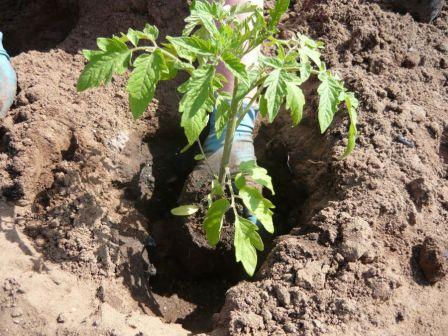
When the time has passed (usually 1-1.5 months), and your seedlings will be strong and ready for planting in the garden or greenhouse, you need to temper it. Start lowering the temperature, take out a couple of hours to the balcony, then increase the amount of time in the cold.
If you plant for a greenhouse - then it's time in the middle of May. In the open ground - wait until the beginning of June, so that for sure gentle sprouts were not waiting for any troubles in the form of cooling. Choose a lighter area so that there is a lot of sun, tomatoes love this. The soil is not very demanding. 10 days before transplanting seedlings, you need to treat it with copper sulfate to insure against fungal diseases.
Fertilize the soil with organic matter, loosen and transfer the plants - to each hole individually. Or you can do this - bind two plants and plant them together.Then, after a while, cut the rope, pinch off the top of a weak plant, and you will have a good strong bush with two roots - very promising in terms of yield.
Transplant in the morning or before sunset, when its rays do not burn delicate plants. Water twice a week.
Many more useful tips - planting tomato for seedlings in 2017.
Gardeners Mistakes
The following errors can reduce the quality and quantity of the crop, consider them when growing seedlings:
• seeds were sown too early, and by the time they were planted in the soil, they had either stretched out or disappeared altogether;
• you bought varieties that do not have resistance to stretching;
• did not comply with the temperature regime;
• used poor soil;
• did not comply with the rules of lighting;
• too watered, and the roots rotted or vice versa, allowed the drying out of the earth;
• did not temper seedlings before being transferred to the ground.
Tip: Poorly developed roots or elongated seedlings can occur from waterlogged soil and low light.
The most difficult and requiring careful care the last 2-3 weeks before disembarkation. All instructions must be followed carefully. If during this period the temperature regime is violated and the humidity is not monitored, the seedlings can become exhausted, stretch out, become brittle, can even heal and the buds that appear will crumble.
Where to plant
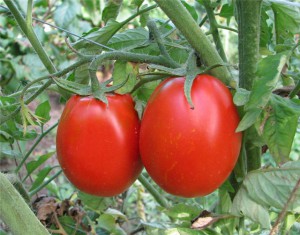
Tomatoes are distinguished by the fact that they greatly deplete the soil, so they are recommended to be planted back in place no earlier than three years later. Before planting, fertilize the soil, as well as fertilizers, in those areas where tomatoes grew last year. Add compost, you can add humus. If you bring in organic matter, and there is no other place for tomatoes, you can plant it in the second year, but only if the previous tomatoes were not ill with late blight.
Another look: varieties of tomatoes with a photo and description for the Moscow region.




 Low-growing tomatoes, without pinching: 5 of the most delicious varieties
Low-growing tomatoes, without pinching: 5 of the most delicious varieties Why tomato seedlings grow poorly
Why tomato seedlings grow poorly We grow a tomato in a shell
We grow a tomato in a shell Growing tomatoes without watering according to the method of Kazarin
Growing tomatoes without watering according to the method of Kazarin